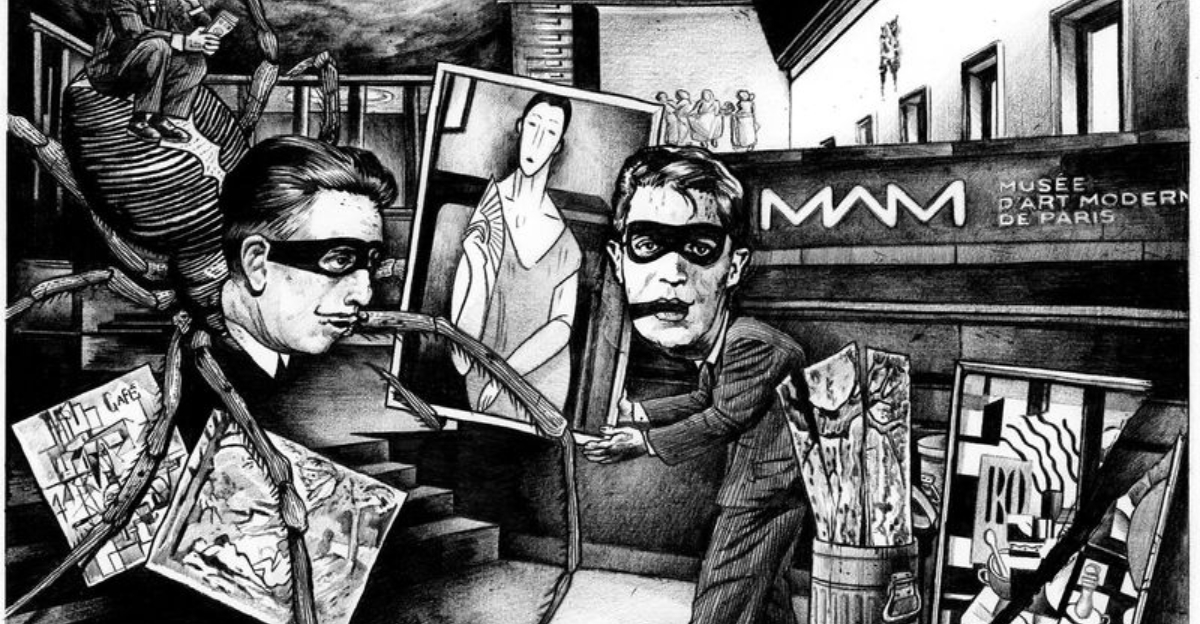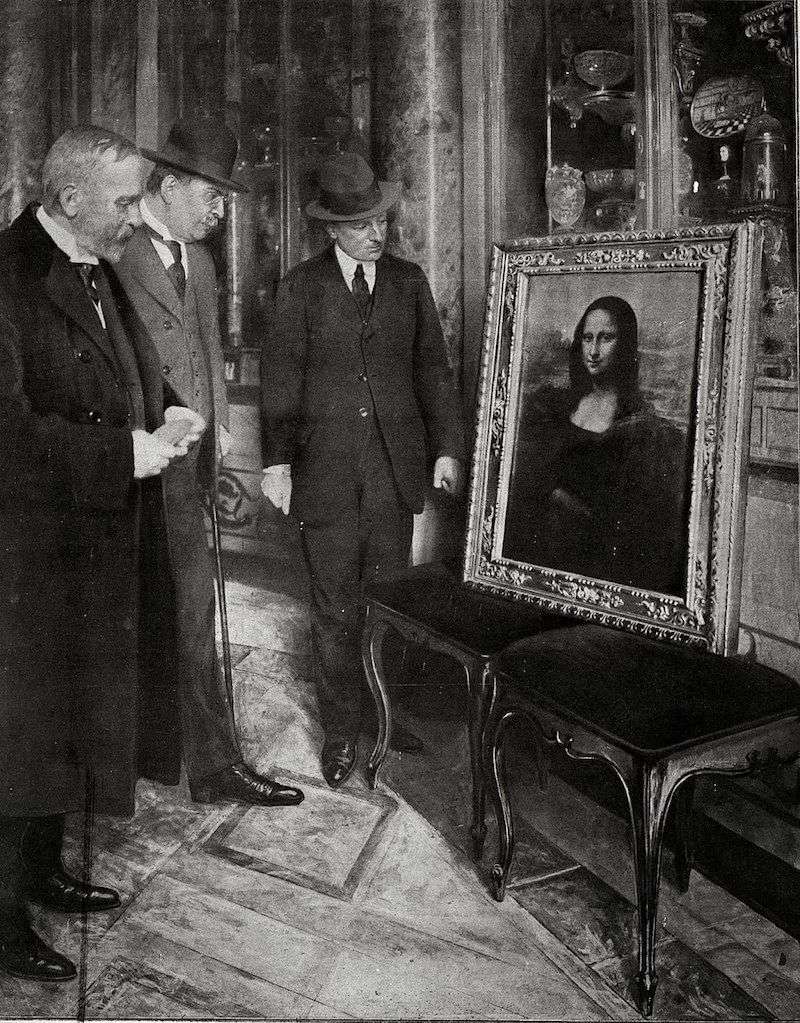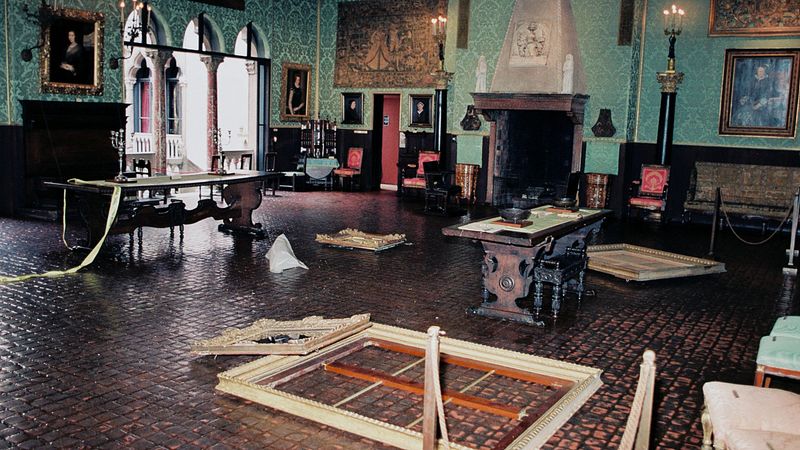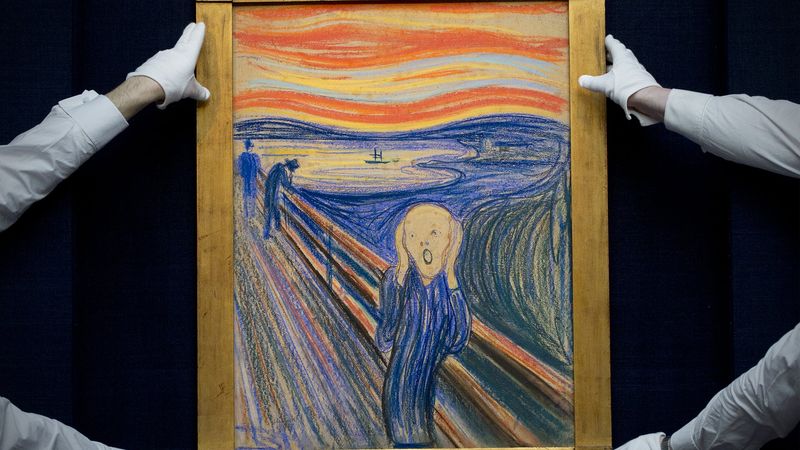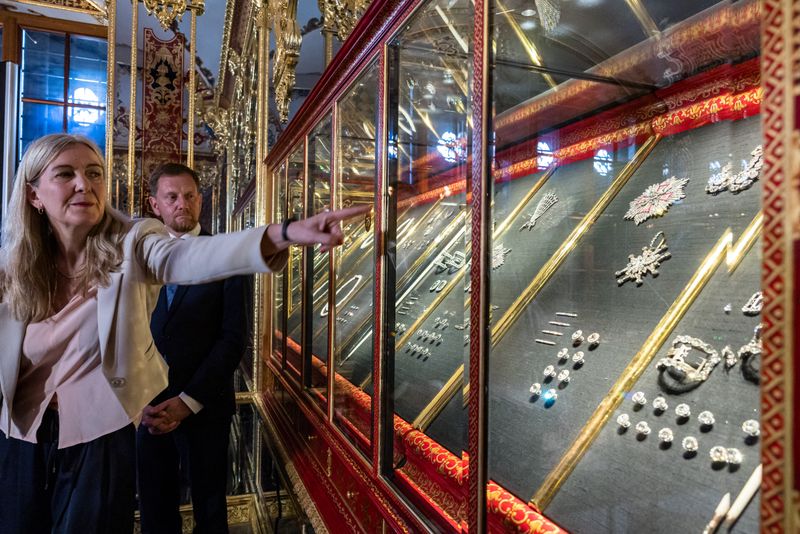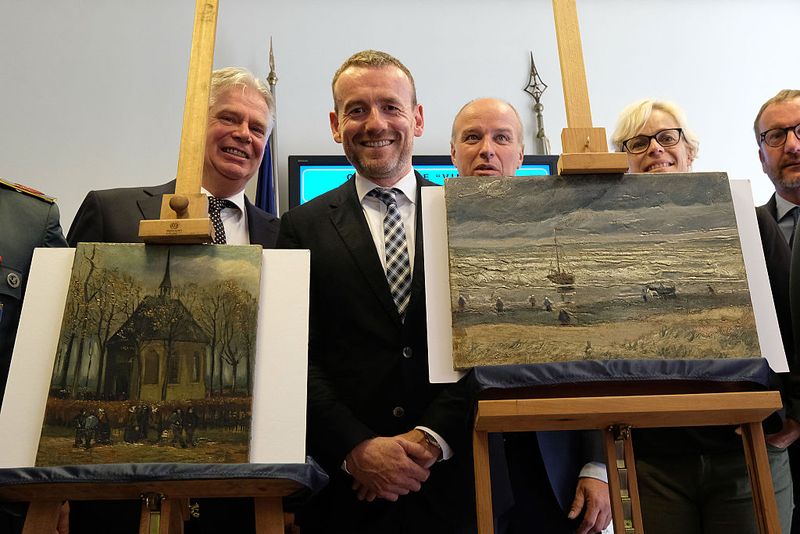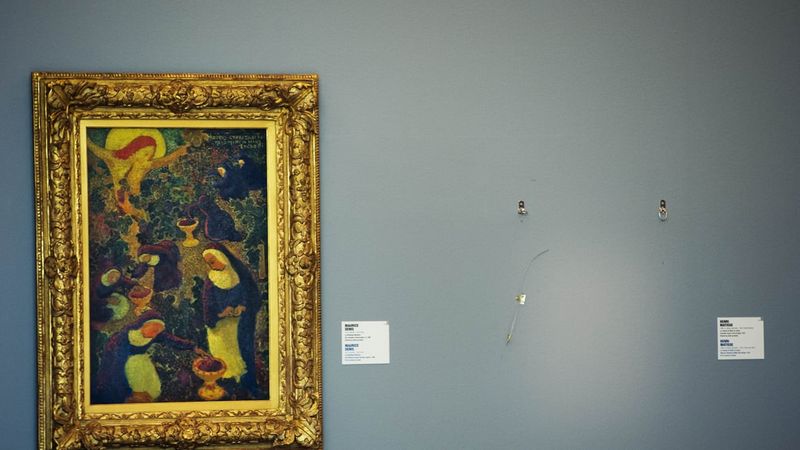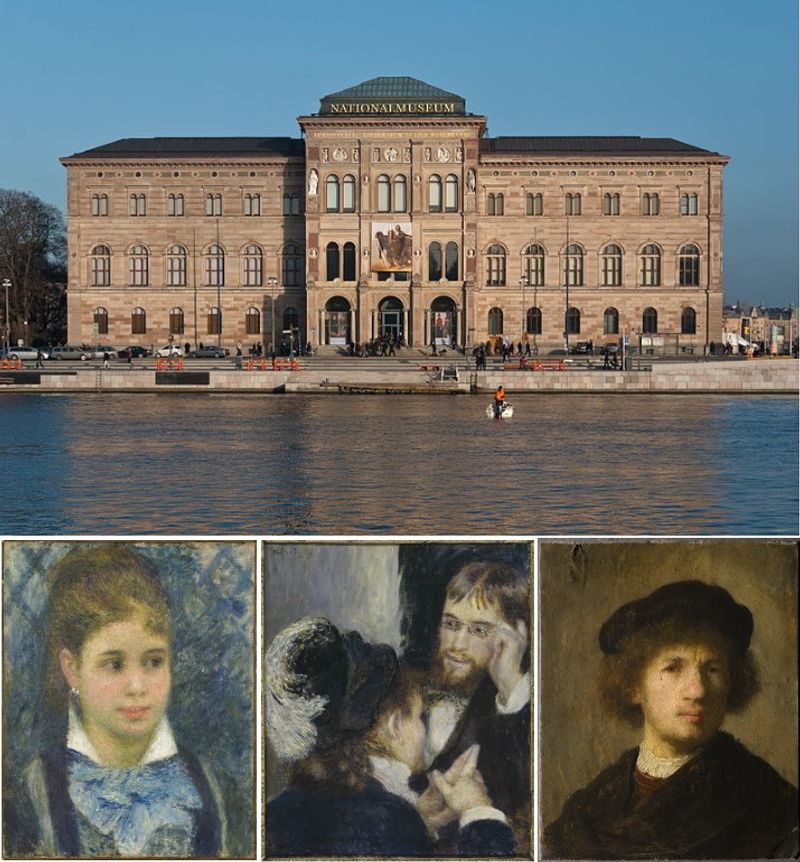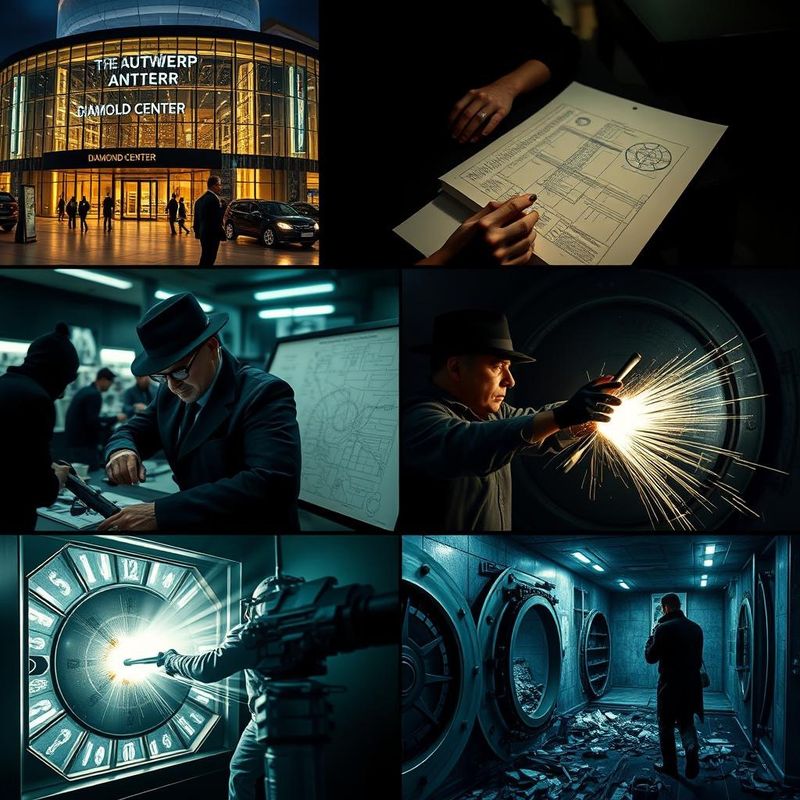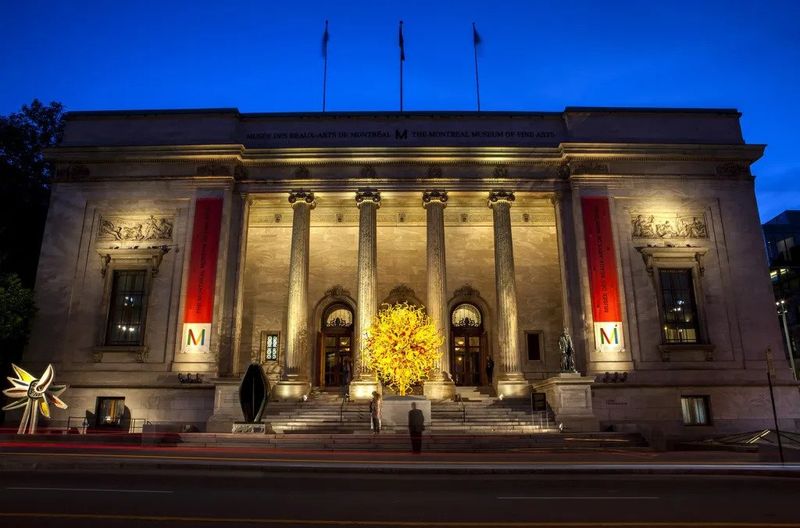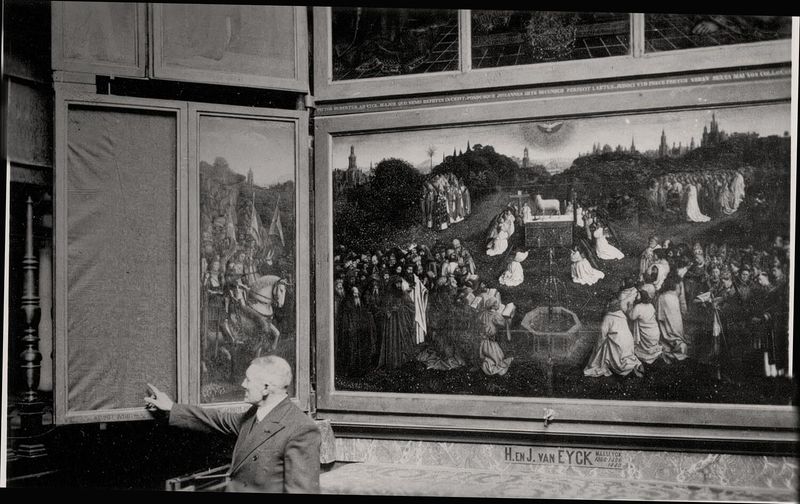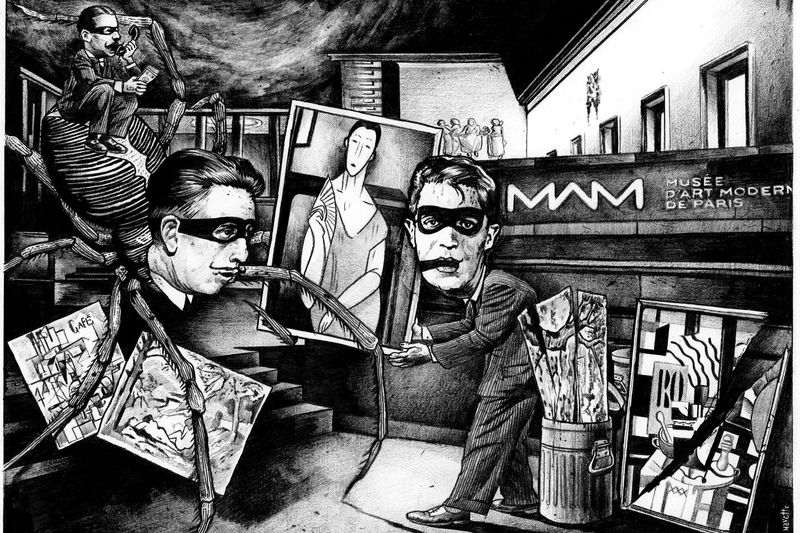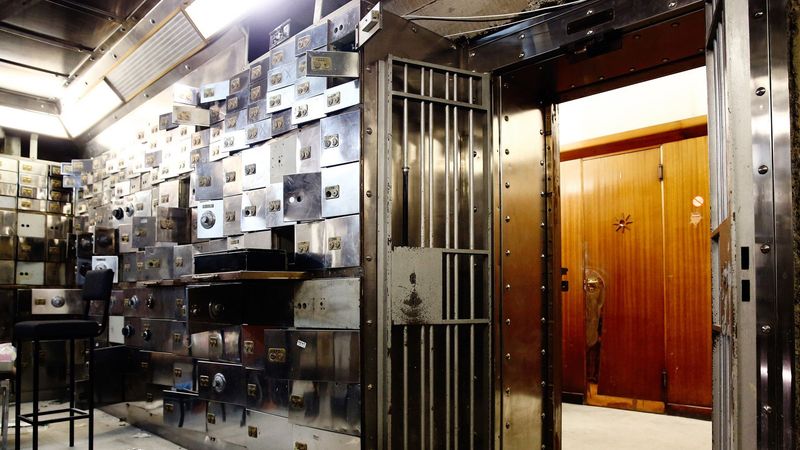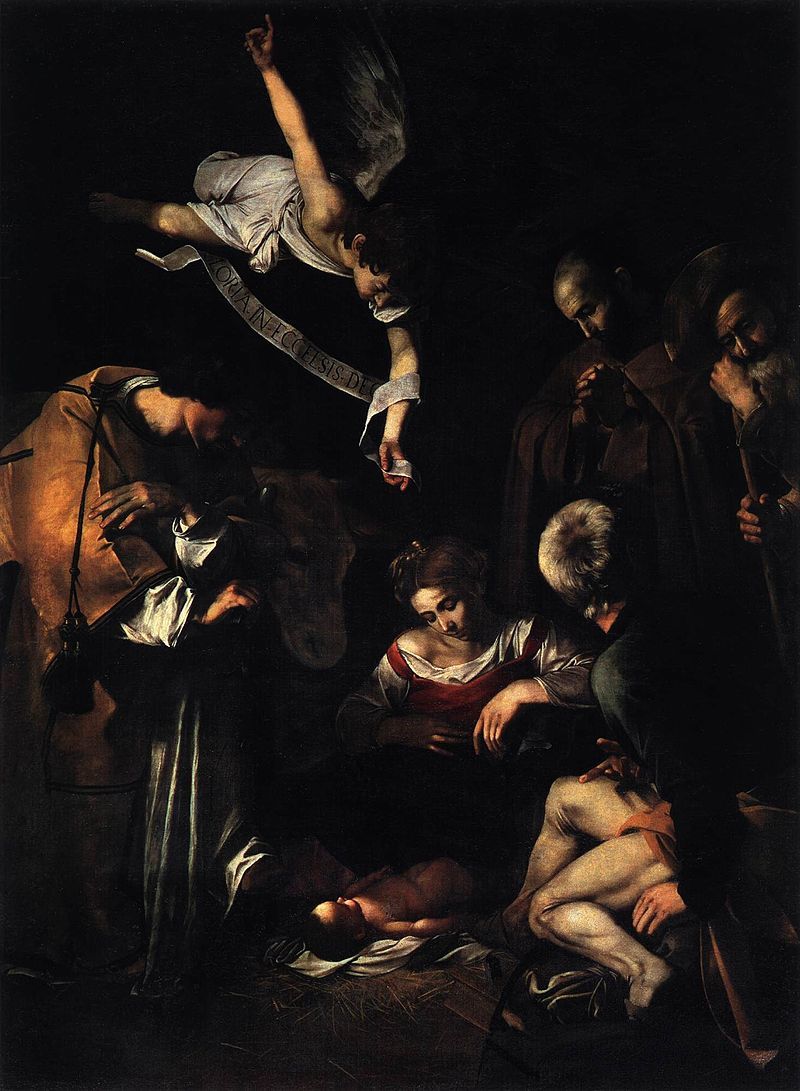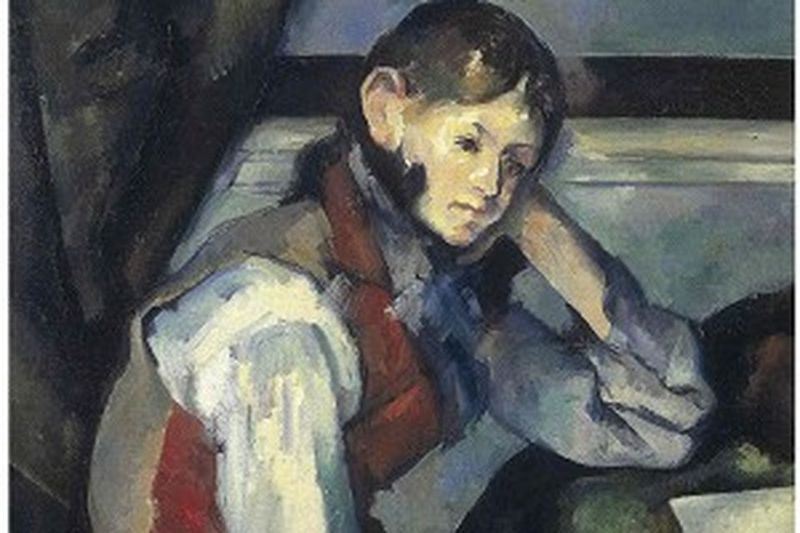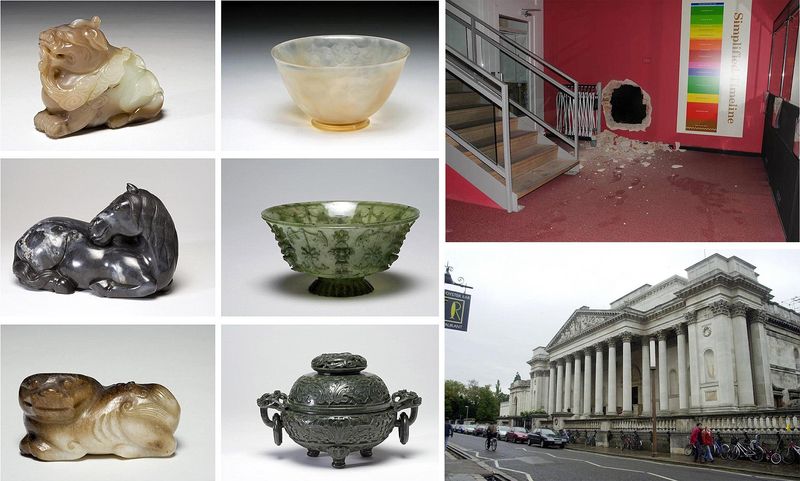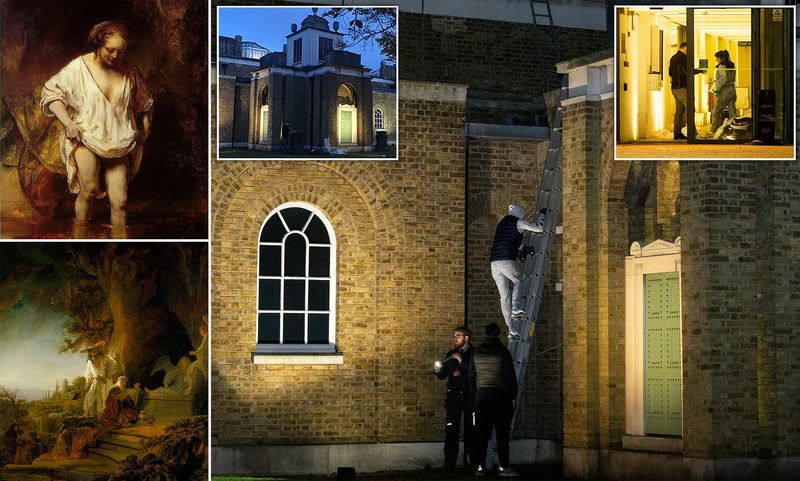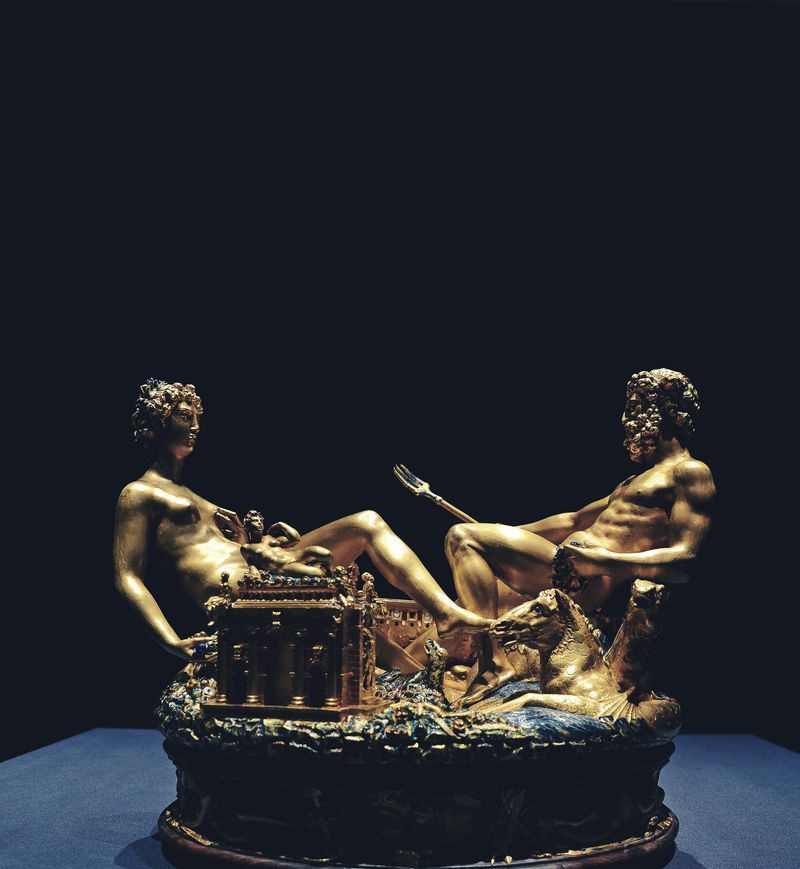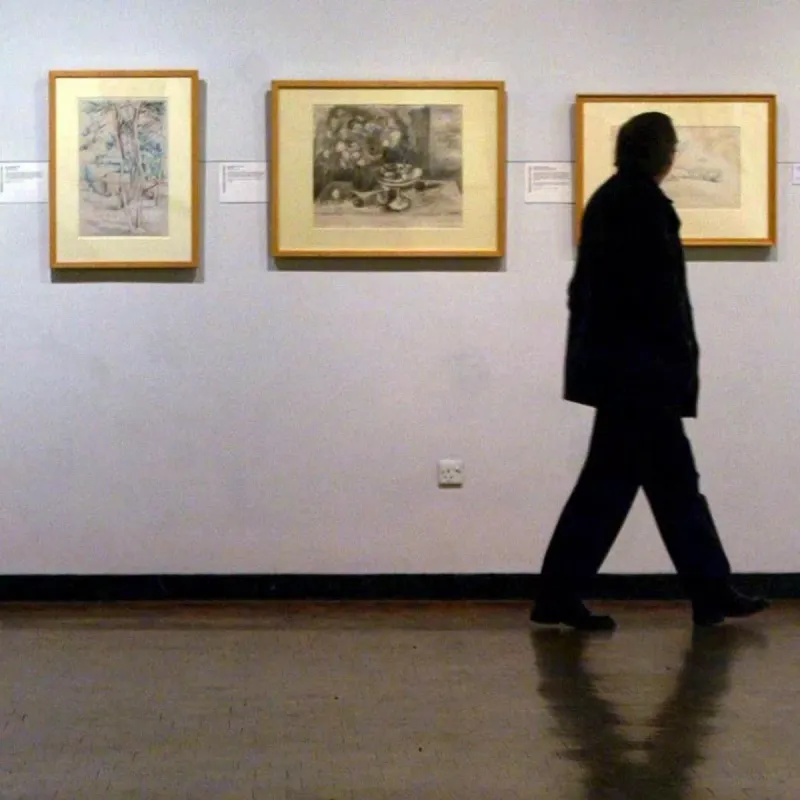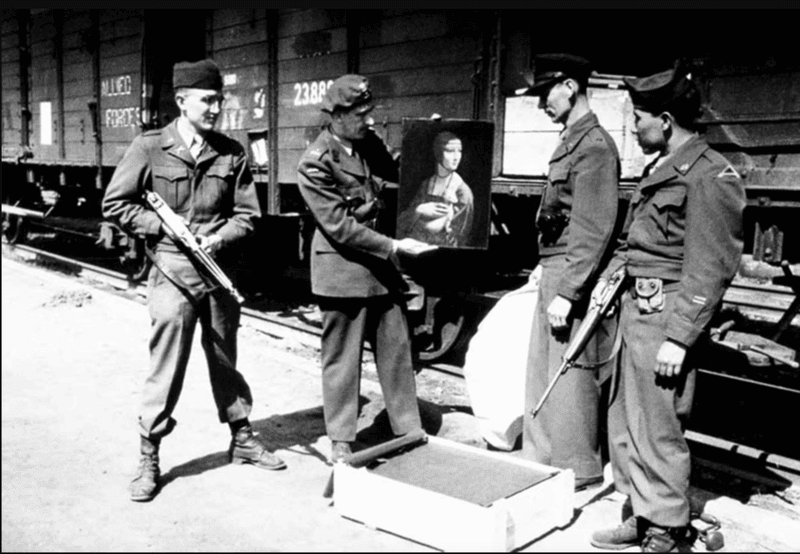The world of art has not only been defined by the masterpieces it produces but also by the incredible heists that have taken place throughout history. From paintings to jewels, these thefts have mesmerized the public, leaving behind stories of intrigue, mystery, and sometimes recovery. Here, we delve into 20 of the most fascinating art thefts ever recorded, exploring the daring plans, the audacious thieves, and the priceless artifacts that were stolen.
1. The Mona Lisa (1911)
Vincenzo Peruggia, a Louvre employee, executed one of history’s most audacious art thefts. In 1911, he hid overnight in the museum and walked out with Leonardo da Vinci’s famed Mona Lisa under his coat. Remarkably, the painting’s absence went unnoticed for a full 24 hours, allowing Peruggia time to flee. The world was stunned by the loss of this iconic masterpiece. For two years, the Mona Lisa’s whereabouts remained unknown. Peruggia was eventually caught trying to sell it in Italy, claiming he wanted to return it to its homeland.
2. Isabella Stewart Gardner Museum Theft (1990)
In 1990, the art world was shaken by the theft at the Isabella Stewart Gardner Museum in Boston. Two men, disguised as police officers, convinced the guards to let them inside. They swiftly overpowered the guards and, with meticulous precision, selected 13 priceless works, including Vermeer’s The Concert and Rembrandt’s Storm on the Sea of Galilee. Valued at over $500 million, this remains the largest unsolved art heist. Despite extensive investigation and a $10 million reward, the masterpieces are still missing, leaving a gaping hole in art history.
3. The Scream (1994 & 2004)
Edvard Munch’s The Scream became the target of thieves not once, but twice. The first daring daylight heist occurred in 1994 at Oslo’s National Gallery, with the painting recovered months later. A decade later, in 2004, armed robbers struck the Munch Museum, again absconding with this iconic piece of art. The painting’s haunting depiction of existential dread seems to echo the very anxiety it causes in the art world when it goes missing. It was thankfully recovered in 2006, but the thefts highlighted the vulnerabilities of priceless art.
4. The Dresden Green Vault Heist (2019)
The 2019 heist at Dresden’s Green Vault stunned the world with its audacity and scale. A gang, known for their cunning, cut power to the museum and used an axe to smash their way to 18th-century treasures. Their haul included the Dresden White Diamond, part of a collection valued over $1 billion. While some pieces have been recovered, the heist remains a testament to the allure of historic jewels. The robbery was one of the largest in modern history, highlighting both the cunning of thieves and the challenges of protecting such treasures.
5. The Van Gogh Museum Theft (2002)
In 2002, the Van Gogh Museum in Amsterdam fell victim to a daring theft. Two men used a ladder to break into the museum at night, stealing two invaluable Van Gogh paintings: View of the Sea at Scheveningen and Congregation Leaving the Reformed Church in Nuenen. The heist was swift and left the art world in shock. It took 14 years before these masterpieces were finally recovered in Italy. The theft underscored the persistent vulnerability of art institutions, even with advanced security measures, to determined thieves.
6. The Russborough House Heists (1974, 1986, 2001)
Ireland’s Russborough House is infamous for being targeted multiple times by art thieves. The first in 1974 involved IRA members, followed by a notorious gangster in the subsequent heists of 1986 and 2001. Masterpieces by Vermeer, Goya, and Rubens were taken in these daring robberies. Some artworks were later recovered, often after complex ransom negotiations. These repeated incidents at Russborough highlight both the allure of its art collection and the relentless determination of thieves. The house’s storied past has made it a symbol of art’s vulnerability to theft.
7. The Kunsthal Museum Theft (2012)
The Kunsthal Museum in Rotterdam faced a staggering loss in 2012 when a Romanian gang executed a well-planned heist. They stole seven paintings, including works by Picasso and Monet, valued at over $100 million. The theft was swift and has led to numerous speculations, including a shocking claim that some paintings were burned by the thieves’ mothers to eliminate evidence. Although some members of the gang were arrested, the actual fate of the masterpieces remains uncertain, casting a long shadow over the art community.
8. The Stockholm National Museum Robbery (2000)
In a heist reminiscent of a Hollywood script, the Stockholm National Museum robbery in 2000 saw thieves using diversion tactics, including car bombs, to facilitate their escape. They stole three Rembrandts and a Renoir, executing their plan with military precision. The paintings were eventually recovered, but the robbery remains one of Sweden’s most dramatic art thefts. The use of such elaborate distractions highlighted a new level of sophistication in art heists, raising questions about security in museums worldwide.
9. The Antwerp Diamond Center Heist (2003)
The Antwerp Diamond Center heist of 2003 is legendary for its complexity and execution. Led by Leonardo Notarbartolo, the team bypassed 10 layers of security to steal diamonds, gold, and jewelry valued at $100 million. The meticulous planning involved disabling alarms and covering security cameras. Despite some arrests, most of the loot remains missing, adding to the heist’s mystique. The incident remains a testament to the ingenuity of criminal minds and a cautionary tale for those safeguarding valuable treasures.
10. The Montreal Museum of Fine Arts Theft (1972)
In 1972, the Montreal Museum of Fine Arts experienced one of Canada’s largest art thefts. Three men overpowered the museum’s guards, making off with paintings by Delacroix, Rembrandt, and others. Valued in the millions, the loss was catastrophic, and only one of the stolen works was ever recovered. The heist remains unsolved, perplexing investigators and art enthusiasts alike. The audacity of the theft, combined with the enduring mystery of the missing art, has cemented this event in the annals of infamous art heists.
11. The Ghent Altarpiece – Theft of the Just Judges Panel (1934)
The theft of the Just Judges panel from Van Eyck’s Ghent Altarpiece in 1934 remains an enduring mystery. Arsène Goedertier, a seemingly ordinary stockbroker, managed to steal this piece from St. Bavo’s Cathedral in Belgium. Before he could reveal its location, Goedertier died, leaving behind only a cryptic note. Despite numerous search efforts, the panel has never been found. This heist continues to captivate historians and enthusiasts, representing one of art history’s greatest unresolved puzzles and a testament to human intrigue and obsession.
12. The Musée d’Art Moderne de Paris Theft (2010)
In 2010, the Musée d’Art Moderne de Paris fell victim to a sophisticated theft by a lone burglar. Under the cover of darkness, he disabled alarms and cameras, making off with works by Picasso, Matisse, and Modigliani, collectively valued at €100 million. Only one suspect was ever arrested, and the paintings remain missing to this day. This heist highlighted vulnerabilities in museum security systems, sparking debates on how to better protect cultural treasures. The incident remains a poignant reminder of both art’s allure and fragility.
13. The Hatton Garden Heist (2015) – Not Just Jewels
The 2015 Hatton Garden Heist in London wasn’t just about jewels; rare art and gold were also stolen. A group of elderly career criminals, known as the “Bad Grandpas,” meticulously planned the break-in during the Easter weekend. They drilled through concrete walls to access the vault, making away with millions in valuables. Most gang members were apprehended, but much of the loot is still missing. The heist’s audacity, combined with the unconventional profile of its perpetrators, makes it a standout in the annals of criminal history.
14. The Caravaggio Nativity Theft (1969)
In 1969, Caravaggio’s Nativity with St. Francis and St. Lawrence was cut from its frame in the Oratory of San Lorenzo, Palermo, by the Sicilian Mafia. This iconic painting’s fate remains shrouded in mystery, with rumors suggesting it was hidden in a farmhouse or destroyed. The loss of such a masterpiece is deeply felt in both the art community and cultural history. Despite numerous investigations and theories, the whereabouts of the Nativity are still unknown, making it one of the most haunting unresolved art thefts in history.
15. The E.G. Bührle Collection Robbery (2008)
The E.G. Bührle Collection in Zurich witnessed a brazen robbery in 2008 when three armed men stormed the museum. They stole four masterpieces by Cézanne, Degas, Van Gogh, and Monet, together valued at $163 million. The heist occurred in broad daylight, shocking both the public and art world. Although two paintings were recovered, the Cézanne and Degas remain elusive. This theft demonstrated the boldness of modern criminals and the ongoing challenges faced by museums in safeguarding priceless works from audacious heists.
16. The Norwich Castle Museum Theft (1990)
In 1990, the Norwich Castle Museum in England was targeted by thieves who used scaffolding to gain entry. Their prize was a collection of rare Chinese artifacts, including a 2,000-year-old jade bowl. The theft was executed with precision, leaving investigators baffled. Despite efforts to recover the treasures, most remain missing, casting a shadow over the museum’s renowned collection. This heist highlights the global allure of cultural artifacts and the lengths to which thieves will go to obtain them, even from well-guarded institutions.
17. The Dulwich Picture Gallery Heist (1966 & 1981)
The Dulwich Picture Gallery in London experienced two separate heists in 1966 and 1981, each targeting its valuable Rembrandt paintings. In the first theft, three paintings were stolen but later found abandoned. The 1981 heist saw two more paintings removed, with one being recovered in 1993. These incidents underline the persistent appeal of Rembrandt’s works to thieves. The gallery’s repeated targeting underscores the vulnerability of even well-guarded art institutions. Both heists remain notable in the history of art thefts for their audacity and the lingering mystery of missing pieces.
18. The Kunsthistorisches Museum Theft (2003)
In 2003, a lone robber scaled scaffolding at Vienna’s Kunsthistorisches Museum, stealing Benvenuto Cellini’s priceless Saliera, a gold and enamel salt cellar. This daring theft took place under the cover of night, captivating the public with its bold execution. The thief later demanded ransom for the Saliera’s return, drawing comparisons to movie-style heists. Ultimately, the piece was recovered in 2006, but the incident remains a testament to the allure of unique art objects and the lengths to which individuals will go to possess them.
19. The Whitworth Art Gallery Theft (2003) – The “We Didn’t Mean It” Heist
In an unusual twist on art theft, the Whitworth Art Gallery in Manchester was targeted by protesters in 2003. They stole works by Van Gogh, Picasso, and Gauguin but claimed their intent was to highlight poor security. Remarkably, the art was left in a nearby public toilet, accompanied by a note criticizing museum security measures. This heist, dubbed the “We Didn’t Mean It” Heist, was as much a social statement as a crime, highlighting vulnerabilities while sparking a conversation about museum security and the protection of cultural assets.
20. The Boldest Fake: The Portrait of a Young Man (World War II)
During World War II, Raphael’s Portrait of a Young Man was seized by Adolf Hitler’s art-looting team for the planned Führermuseum. This masterpiece, taken from Poland, has since vanished, sparking theories about its fate. Some suggest it was destroyed, others believe it’s hidden or in a private collection. The painting’s loss is a significant cultural blow, symbolizing the vast and often irretrievable art looted during the war. Its continuing absence serves as a haunting reminder of the cultural plunder that occurred during this dark chapter in history.
